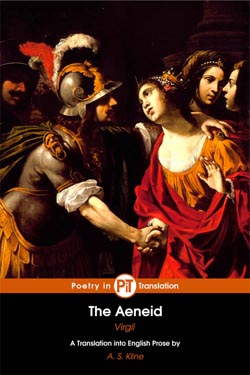Virgil
The Eclogues and Georgics

Virgil's Eclogues—ten bucolic poems freely imitating Theocritus' Idylls and creating a pastoral world of love and song—and his Georgics—a poetic treatise on farming in four books. Published with engravings from the 1697 Tonson edition of John Dryden’s translation of the Works of Virgil - courtesy of Wikimedia Commons.
The Georgics Book I: Agriculture
The Georgics Book II: Arboriculture and Viniculture
The Georgics Book III: Livestock Farming
The Georgics Book IV: Bee-Keeping (Apiculture)
About This Work
Virgil’s Eclogues, also known as the Bucolics, is his earliest major work, comprising ten pastoral poems. Adapting Greek bucolic traditions, specifically those of Theocritus, Virgil imbued his Roman rendition with both political and mythical narratives. Set during Rome’s chaotic period of around 44 to 38 BC, these poems diverge from Theocritus by incorporating political unrest. The text features herdsmen engaging in dialogues and competitive singing within pastoral scenes, reflecting both resistance and adaptation to societal changes and varied romantic experiences.
The Georgics, written by Virgil in 29 BCE, is a poetic treatise in four books on the agricultural practices of its time. Despite its pastoral subject, the poem is imbued with thematic and existential contrasts. Serving as Virgil’s intermediary piece between the Eclogues and the Aeneid, it synthesises a range of earlier works and has left a substantial imprint on subsequent literature. The astronomical references are to the visible heavens at that period, these being subject to subsequent precession of the equinoxes, meaning that Virgil’s references do not completely apply to contemporary times.
About the Author
Virgil (Publius Vergilius Maro, also called Vergil) was born near Mantua, in Cisalpine Gaul, in 70BC. He is known for three major works of Latin literature, the Eclogues or pastoral poems, the Georgics a treatise on farming, and his epic the Aeneid. He benefited greatly from the enlightened patronage of Maecenas, an ally, friend and political advisor to the Emperor Augustus. Virgil dedicated the Georgics to Maecenas. According to tradition, Virgil visited Greece in order to revise the Aeneid which he wrote between 29 and 19BC. After meeting Augustus in Athens and deciding to return home, he caught a fever and, after crossing to Italy, died in Brundisium (Brindisi) in September of the latter year, his ashes reputedly being interred on the site of his villa near Naples, where a burial vault is shown today as Virgil’s Tomb. The Aeneid was published in full after his death, on the orders of Augustus.
Also See:
Virgil - The Aeneid, translated by A. S. Kline
In Virgil’s “Aeneid,” Aeneas escapes Troy’s downfall to establish Rome, thereby legitimizing Rome’s imperial lineage and providing a national myth. Aeneas embodies Roman virtues of loyalty and resolve, and the narrative incorporates elements suggesting Rome’s foundation was destined following Troy’s collapse. The work bridges Greek and Roman epic traditions, situating Aeneas as Romulus’s forbearer. Virgil’s influence extends into later Roman and European literature; notably, Dante employs him as a guide in “The Divine Comedy,” acknowledging his roles in empire-building, poetic tradition, and prefiguring Christianity.
Translated by A. S. Kline © Copyright 2001 All Rights Reserved
This work may be freely reproduced, stored and transmitted, electronically or otherwise, for any non-commercial purpose. Conditions and Exceptions apply.
Last Modified 17th January 2008
